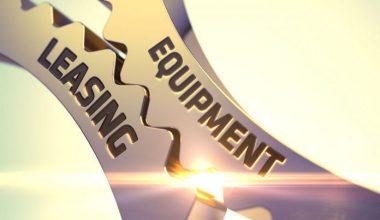Getting money is not that easy. You have to work so hard to close a business deal and also retain your position in a company since it’s your source of income. However, there seems to be little or no money left at the end of the day. What could be the problem? Having savings and being able to monitor money can be a bit challenging. Hence, this article will help you solve that, as I’ll show you a technique to save better using the 70/30 rule. With the help of a 70/30 rule, you can invest in real estate to grow your finances. This article also covers Warren Buffet’s 70/30 rule.
The 70/30 Rule in Finance
It’s so much easier to spend than to earn, though it seems impossible to save with an average or low income, especially in today’s economy. Particularly for individuals whose background is not that great financially, what will actually help you is the right spending habit and the right technique to get your finance alive!.
With the 70/30 rule, you can simply divide the 70 percent for monthly expenditures and use the rest, which is 30 percent, for savings, tithing, investing in real estate, and debt to help your finances.
With the 30 percent, you can split it into 20 percent. The first 10 percent is for tithing; the second 10 percent can be used for savings (and investing), and the remaining 10 percent to clear off your debt depending on how hefty your debt is.
Paying off debt is very important and should be a top concern because paying a high-interest rate can add up real quick. And since we can’t predict unforeseen events, emergency finances must be part of the plan. The future is unpredictable right now, particularly with the way the world is going, however financially planning for it will lessen some of the load in the future.
The best part is that if you follow these guidelines, you’ll be on the safe side! However, you have to discipline yourself to have precise allocations for costs, savings, loans, and investing. Plus, retirement allows you to spend comfortably within your budget without worrying about whether or not you will have enough money in the future.
Tips to Help Monitor 70% Of Expenses
Expenses encompass anything you spend money on, such as bills, utilities, unforeseen bills, shopping, meals, and so on. It’s simply an expense if you spend money on it. It also covers any debts you have, be it a car lease or a home equity loan, that is if you have any.
The following are some suggestions for making this work:
- The actual foundation is to keep it to 70% or less. If there is no need to spend 70% of your income, then don’t! The game is always the same: the less you consume, the more you can save and invest, which means a better future for you and your household. Remember, the highest amount of money you can spend is 70% or less of your total salary.
- You must first determine how much you are currently spending. Monitor every dime you’ve spent in the last two months and enter it into a sheet. Any cost, even if it’s as low as one cent, is acceptable. It’s critical to charting out your complete purchasing habit for yourself. This might seems a bit hard, but you will be glad you did in years to come.
- When tracking expenditures in a spreadsheet, classify them so you can understand what exactly you’re spending your money on quickly (be it groceries, eating out, clothes, bills, furnishings, etc.). It will help you know if you’re spending wisely or spending to have a nightmare in the future.
- Calculate the total of all expenses (during the last two months) and divide by two to get a reasonable monthly average.
- If you spend a huge amount of cash without a credit card or bank statement. Then that implies you don’t have a complete picture of your costs. Which is the more reason you should start tracking every dollar you spend from henceforth.
Why the Use of Percent in the 70/30 Rule in Finance?
Because it’s easier and helps monitor how and what to spend your money on. Moreover, our earnings may fluctuate, and percentage calculations will make dealing with variations much easier. Using the 70/30 rule in finance to apply in investing, will also be of a great deal for you.
The 70 Percent
Rentals, bills, emergency expenditures, groceries, and other expenses are all listed under expenses. It is immediately termed as an expense as we previously said.
Here is an example of your monthly take-home income to help you understand better.
If your monthly salary is $8,000, you can simply multiply it by.7 to get $5,600. So you have $5,600 every month to spend on bills, utilities, shopping, groceries, and other expenses.
Note: If it’s not necessary to spend the entire 70%, then don’t. Always keep in mind that 70% or less is the true key and that 70% is your maximum.
Moreover, the less money you spend, the more money you have to save or invest!. So prioritize your need and don’t focus on wants.
However, if you’ve gone over budget, now is the perfect moment to make changes. Reduce your superfluous desires till you’re down to 70%. Make sure to save, even if it means having an account that is strictly for savings, no withdrawal or transfer.
This should not be difficult if you learn how to survive within or even below your means. This guideline is not that difficult to follow, you just need to take action. Please don’t feel awful. Your sacrifices today will pay you later when you are able to reclaim your comforts.
Is 20 Percent Achievable?
Yes! It is, though it might be difficult when it comes to savings, and as you already know, paying off debt is super important.
To get your 20 percent, simply multiply your monthly income ($8000) by 0.2 to get your 20 percent. With the illustration, $8,000×0.2=$1600.
Don’t feel stressed or upset if attaining a steady 20% of your take-home earnings is challenging. You can save as much as you like at first, and then progressively raise the amount as time goes on.
The 10 Percent
Below are where some of the individuals put in their ten percent or more, depending on who they are and what they believe in.
#1. Tithe Payments
Believers that truly see and know that giving their ten percent to God is their duty never fail in their commitment to God. Hence, it’s a must to do whether it’s convenient for them or not.
#2. Save
People who are financially disadvantaged spend their money first and save the rest. Those who are financially wealthy people save their money first and spend the rest.
It’s crucial to develop the habit of retaining money in your bank account and then resisting the temptation to spend it. Moreover, you can’t invest if you can’t save, because you need to save up a considerable amount before investing. The ball is always in your court.
#3. Giving to a Good Cause
Giving out for a good cause is for those that feel compelled to help the less fortunate. If you are in this category, then you can set aside 10% of your money for a cause that you care about.
#4. Investing
This is the key to creating wealth, and you might ask, what’s the best way to do so? There are numerous options. Just allow your creativity to run free. Examine the abilities you’ve acquired; you might be able to turn them into a lucrative business.
You can also learn how to purchase a product wholesale and resell it to merchants. You can also acquire a piece of property, enhance it, and resell it or rent it out. Investing in real estate with the 70/30 rule cannot be overemphasized.
Use this 10% to get started by purchasing your equipment, products, or stocks. There’s no way of knowing what brilliance lies dormant inside you, waiting to be reawakened by these opportunities!
Prioritizing investments is a very wise thing to do because it will save you a lot in the future. It can also assure your long-term financial security and give you an edge in your business, no matter the economy.
#5. Retirement
Early retirement investing will enable you to be self-sufficient and will not throw you off balance when there are any unforeseen occurrences.
What Is Warren Buffett’s 70/30 Rule?
The Warren Buffet 70/30 rule is an investment strategy. According to the theory, if someone can locate two investment possibilities with the same level of return, one at 10% and the other at 20%, he should invest in the latter since it has double as much upside potential (70%) to account for risk.
Warren Buffet 70/30 Rule Basics
The 70/30 Warren Buffett rule portfolio is one in which you invest 70% of your money in stocks and 30% in fixed income. As a result, an investor following this method would invest 70% of their money in personal equities, and exchange-traded funds (ETFs). Bonds, cash, and cash equivalents would account for the other 30% of their investment.
The 70/30 Warren Buffett rule asset allocation approach is commonly mistaken for the 60/40 asset allocation methodology. A 60/40 portfolio allocates 60% of assets to equities and 40% of assets to bonds. Because there is a more significant allocation to stocks in a 70/30 portfolio, it carries more risk than a 60/40 strategy.
To stabilize currency fluctuations, keep a good quantity of bonds and other fixed-income assets on hand. If you’re concerned that a 60/40 asset allocation is too cautious for your requirements and ambitions, a 70/30 portfolio can be a good option.
Finally, a financial advisor can assist you in determining the best way to budget for your specific needs and objectives. Finding a skilled financial advisor does not have to be difficult, particularly in this technological age. Start looking for a financial advisor now if you’re ready to save and invest better with the warren buffet 70/30 rule
70/30 Rule Real Estate With House Flipping
Home flippers make money by purchasing a home for a low price, renovating it, and then selling it for a premium price. Flippers seek to increase their earnings by purchasing low and selling high. When looking at investing in real estate listings, the 70/30 percent rule can be useful. Essentially, it states that investors should pay no more than 70% of a property’s after-repair worth, minus the cost of the repairs required to refurbish it.
This means that the estate’s after-repair value, or ARV, is the price it could offer after being renovated by flippers. When purchasing a home to convert, investors must calculate how much the estate will sell after renovation. They can then multiply that figure by 70% and deduct it from the property’s anticipated renovation cost.
Is the 70/30 Rule Good?
The 70%/30% rule in finance enables many people to spend, save, and invest money over the long term. The formula is straightforward: divide your monthly take-home pay by 70% for spending, 20% for savings and debt, and 10% for giving to charity or investing for retirement.
How Much Cash Do the Wealthy Keep?
According to studies, millionaires may keep as much as 25% of their funds in cash on hand at any given time. This is done to counteract any market downturns and to keep cash on hand as portfolio insurance. Financial instruments known as cash equivalents are virtual as liquid as cash. are common investment options for millionaires
How Much Savings Is Too Much?
Your money eventually depreciates and becomes less valuable. If you have more money in your savings account than the $250,000 cap set by the Federal Deposit Insurance Corporation (FDIC), which is obviously not an issue for the ordinary saver, that is another sign that you have too much cash on hand.
Is It Better To Keep Cash or Put It in the Bank?
Keep your money hidden in a bank or credit union that is covered by the Federal Deposit Insurance Corporation so that it can generate interest and enjoy the full benefits of the FDIC’s insurance.
Where Do People Usually Hide Money in Their Houses?
Here is a list of the most typical places individuals store money and other valuables, based on our experience: furniture, including beds and nooks, and crannies. envelopes, both shoved under the cushions of the couch and kept in desk drawers. purses and the items they contain, including wallets, lipstick holders, and compact mirrors
What Is the Safest Place To Keep Money?
Deposit insurance is also included with certificates of deposit (CDs) issued by banks and credit unions. Because the U.S. government has never defaulted on its obligations, U.S. government assets, such as Treasury notes, bills, and bonds, have long been regarded as being exceptionally safe.
Conclusion
There are moments when we feel compelled to catch up with the pace of society. Some of us have been so influenced by trends on social media that we feel compelled to be accepted to the point that we will adapt irresponsibly in order to retain a fake image or position.
We will discover that if we become more conservative with our money by applying this guide and making a lifestyle. Then we will be able to make better judgments, use what we have wisely, and attain our long-term goals.
70/30 RULE FAQs
What is a 70/30 investment?
A 70/30 portfolio is one in which stocks account for 70% of the investment capital and fixed-income instruments, mainly bonds, account for 30%.
Is 70/30 A good asset allocation?
70/30 asset allocation is considered a moderate risk, so it’s good to an extent.
{
“@context”: “https://schema.org”,
“@type”: “FAQPage”,
“mainEntity”: [
{
“@type”: “Question”,
“name”: “What is a 70/30 investment?”,
“acceptedAnswer”: {
“@type”: “Answer”,
“text”: “
A 70/30 portfolio is one in which stocks account for 70% of the investment capital and fixed-income instruments, mainly bonds, account for 30%.
“
}
}
, {
“@type”: “Question”,
“name”: “Is 70/30 A good asset allocation?
“,
“acceptedAnswer”: {
“@type”: “Answer”,
“text”: “
70/30 asset allocation is considered a moderate risk, so it’s good to an extent.
“
}
}
]
}






